Opel Grandland vs VW Tiguan – ¿Qué coche se adapta mejor a ti?
Dos coches, un duelo: Opel Grandland se enfrenta a VW Tiguan.
¿Quién gana en rendimiento, consumo y relación calidad-precio? ¡Descúbrelo ahora!
Engines at a Glance: Which SUV Packs More Power?
When it comes to engine options, both the Vauxhall Grandland and VW Tiguan offer a diverse range of powertrains, aimed at satisfying both the eco-conscious driver and the power enthusiast.
The Grandland presents a choice between petrol MHEV, plug-in hybrid, and purely electric variants. Its power ranges from 136 HP to a robust 213 HP, delivering swift acceleration, with 0-100 km/h times between 7.8 and 10.2 seconds. The vehicle comfortably hits a top speed of 220 km/h offered by its hybrid counterparts. Notably, the Grandland boasts an all-electric range up to 585 km, a testament to its green credentials.
In contrast, the Tiguan gives a wider selection under its hood, encompassing petrol MHEV, plug-in hybrid, diesel, and petrol engines. The Tiguan's power spectrum spans from 130 HP to a potent 272 HP, achieving 0-100 km/h in as little as 5.9 seconds with its highest spec. Its maximum speed reaches up to an exhilarating 242 km/h, showcasing the impressive power VW has packed into this SUV.
Fuel Efficiency: Saving the Environment One Drive at a Time
Fuel consumption is a critical consideration for any potential car buyer, and both the Grandland and Tiguan deliver noteworthy performance in this area. The Grandland offers consumption figures of 6.4 L/100km for its petrol engines and an impressive 0.8 L/100km for its plug-in hybrid, alongside electricity consumption between 16.9 and 17.7 kWh/100km.
The Tiguan, meanwhile, returns commendable figures as well, with its plug-in hybrid achieving as low as 0.4 L/100km and an electric range of about 113 km. Depending on your selected variant, its combustion engines offer consumption between 5.3 and 8.5 L/100km.
Interior Sophistication and Practicality: Which Provides More Comfort?
Both models feature a 5-seat configuration, ensuring comfort for passengers. Regarding space, the VW Tiguan wins the battle of the boot with a maximum trunk capacity running at 652 liters, compared to the Grandland’s 550 liters. Thus, the Tiguan can better accommodate the needs of larger families or those who require more cargo space.
Dimensions and Design: Size Up the Competition
While both are classified as SUVs, subtle variances in their dimensions set them apart. The Grandland is slightly longer at 4650 mm, compared to the Tiguan's 4539 mm length. Furthermore, with a width of 1934 mm and a height of 1665 mm, the Grandland flexes a more dominating presence on the road, promising roomier interior ergonomics.
Tech Innovations and Safety: A Modern Driving Experience
Both vehicles are packed with cutting-edge technology and safety features. They come equipped with modern infotainment systems, driving aids, and connectivity solutions. Each offers top-notch safety features; however, the Grandland takes a slight edge with its adaptive cruise control and lane-keep assist in all models, whereas these are optional in some Tiguan variants.
Price and Value: Weighing the Costs
Though specifics on pricing vary by region and options selected, historically, the Vauxhall Grandland offers a competitive entry point against the VW Tiguan. However, as options and premium features are added, each offers an impressive array of value, depending more so on personal preference and intended use.
In conclusion, the choice between the Vauxhall Grandland and VW Tiguan is one of nuance. Buyers seeking a mix of cutting-edge electric efficiency might lean towards the Grandland. In contrast, the Tiguan offers broader powertrain options and a spacious interior, arguably giving it a slight edge for those needing maximum versatility.
Aquí vienen los hechos: las diferencias técnicas en detalle
Costes y consumo: El precio y la eficiencia son factores clave al comprar un coche – y aquí suelen notarse las diferencias reales.
Opel Grandland tiene una ventaja mínimo en precio: parte desde 40500 €, mientras que el VW Tiguan cuesta 40700 €. La diferencia es de unos 277 €.
También se aprecia una diferencia en el consumo: el VW Tiguan gasta 0.40 L y es claro más eficiente que el Opel Grandland, que consume 2.60 L. La diferencia es de unos 2.20 L cada 100 km.
En autonomía, el Opel Grandland ofrece un rendimiento convincente mejor: alcanza hasta 523 km, unos 394 km más que el VW Tiguan.
Motor y rendimiento: Potencia, par motor y aceleración dicen mucho sobre la experiencia de conducción. Aquí se ve cuál ofrece más dinamismo.
En cuanto a potencia, el Opel Grandland tiene una ventaja en pequeña medida: 325 HP frente a 272 HP. Eso supone un aumento de unos 53 HP CV.
En aceleración de 0 a 100 km/h, el VW Tiguan es ligero más rápido: 5.90 s frente a 6.10 s. Es aproximadamente 0.20 s más veloz.
En velocidad máxima, el VW Tiguan es casi imperceptible superior – alcanza 242 km/h, mientras que el Opel Grandland se queda en 220 km/h. La diferencia es de unos 22 km/h.
También hay diferencias en el par motor: el Opel Grandland empuja claramente perceptible con 509 Nm frente a 400 Nm. La diferencia ronda los 109 Nm.
Espacio y practicidad: Ya sea coche familiar o compañero diario – ¿cuál ofrece más espacio, flexibilidad y confort?
Ambos modelos ofrecen espacio suficiente para 5 personas.
En peso en vacío, el VW Tiguan es ligero más ligero – 1599 kg frente a 1675 kg. La diferencia ronda los 76 kg.
En capacidad de maletero, el VW Tiguan ofrece un poco más espacio – 652 L frente a 550 L. La diferencia es de unos 102 L.
En capacidad máxima de carga, el VW Tiguan es apenas perceptible mejor – hasta 1650 L, unos 5 L más que el Opel Grandland.
En capacidad de carga útil, el Opel Grandland ligero se impone – 568 kg frente a 533 kg. La diferencia es de unos 35 kg.
En general, el VW Tiguan se muestra es claramente superior y se lleva el título de DriveDuel Champion.
Destaca por su equilibrio general y por ser el compañero más versátil en el día a día.
Opel Grandland
El Grandland se presenta como un SUV versátil que combina elegancia y funcionalidad, ideal para familias y aventureros por igual. Su interior, diseñado con atención al detalle, proporciona un espacio acogedor y moderno, garantizando comodidad en cada viaje. Además, su rendimiento en carretera ofrece una experiencia de conducción suave y segura, haciendo del Grandland una opción atractiva en su segmento.
detalles @ media.stellantis.com
@ media.stellantis.com
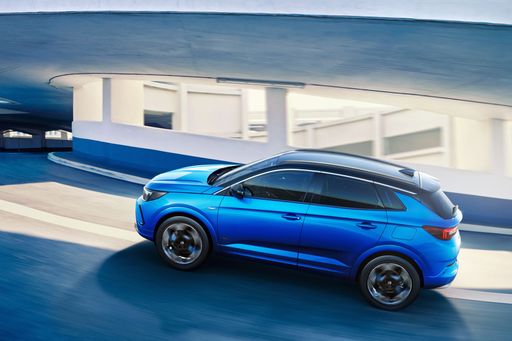 @ media.stellantis.com
@ media.stellantis.com
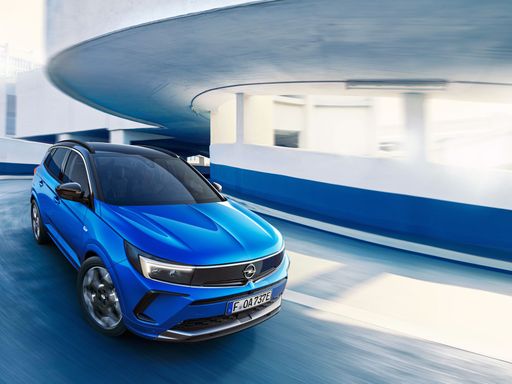 @ media.stellantis.com
@ media.stellantis.com
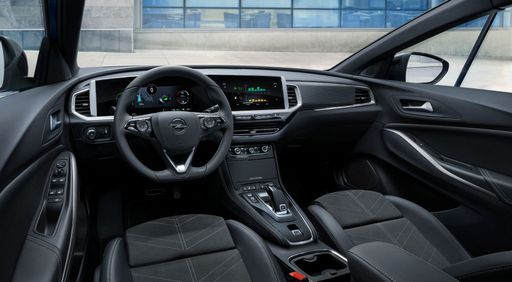 @ media.stellantis.com
@ media.stellantis.com
VW Tiguan
El Tiguan se destaca por su elegante diseño y versatilidad, convirtiéndolo en una opción ideal para familias y aventureros por igual. Su amplio espacio interior proporciona comodidad, mientras que su sistema de infoentretenimiento mantiene a todos conectados durante los viajes. Además, su rendimiento en carretera y su tecnología avanzada garantizan una experiencia de conducción placentera y segura.
detalles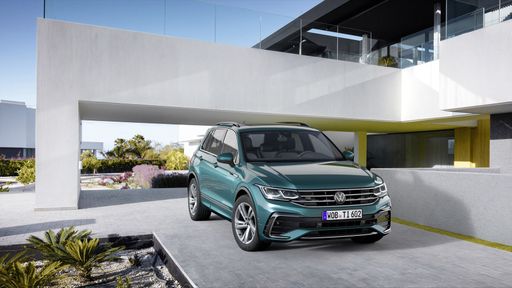 @ Volkswagen
@ Volkswagen
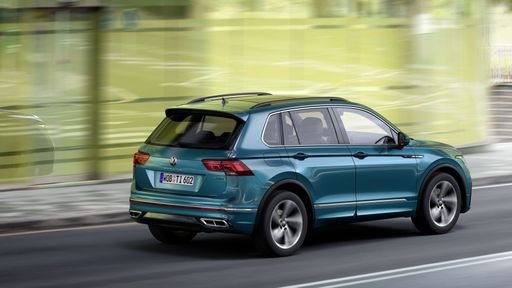 @ Volkswagen
@ Volkswagen
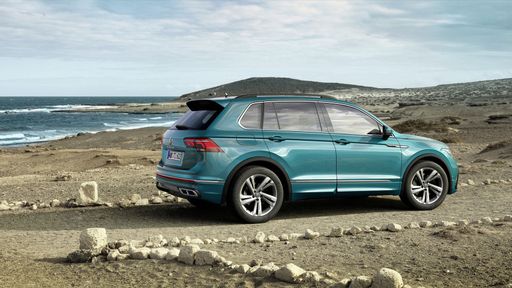 @ Volkswagen
@ Volkswagen
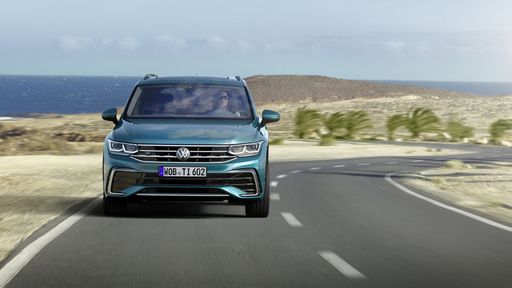 @ Volkswagen
@ Volkswagen
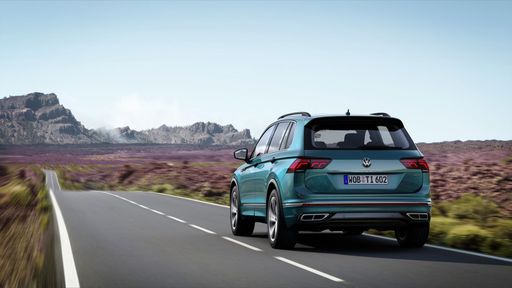 @ Volkswagen
@ Volkswagen
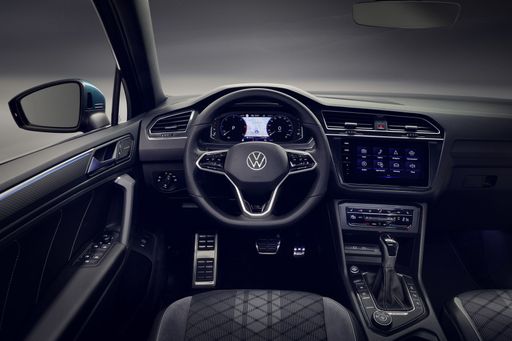 @ Volkswagen
@ Volkswagen

|

|
|
|
|
Costos y consumo |
|
|---|---|
|
Precio
40500 - 61000 €
|
Precio
40700 - 65800 €
|
|
Consumo L/100km
2.6 - 5.6 L
|
Consumo L/100km
0.4 - 8.4 L
|
|
Consumo kWh/100km
16.9 - 18 kWh
|
Consumo kWh/100km
-
|
|
Autonomía eléctrica
82 - 523 km
|
Autonomía eléctrica
119 - 129 km
|
|
Capacidad de la batería
-
|
Capacidad de la batería
19.70 kWh
|
|
co2
0 - 126 g/km
|
co2
8 - 190 g/km
|
|
Capacidad del tanque
55 L
|
Capacidad del tanque
45 - 58 L
|
Dimensiones y carrocería |
|
|---|---|
|
Tipo de carrocería
SUV
|
Tipo de carrocería
SUV
|
|
Asientos
5
|
Asientos
5
|
|
Puertas
5
|
Puertas
5
|
|
Peso en vacío
1675 - 2325 kg
|
Peso en vacío
1599 - 1890 kg
|
|
Capacidad del maletero
485 - 550 L
|
Capacidad del maletero
490 - 652 L
|
|
Longitud
4650 mm
|
Longitud
4539 mm
|
|
Anchura
1905 - 1934 mm
|
Anchura
1842 - 1859 mm
|
|
Altura
1665 mm
|
Altura
1656 - 1658 mm
|
|
Capacidad máxima del maletero
1580 - 1645 L
|
Capacidad máxima del maletero
1486 - 1650 L
|
|
Capacidad de carga
425 - 568 kg
|
Capacidad de carga
460 - 533 kg
|
Motor y rendimiento |
|
|---|---|
|
Tipo de motor
Eléctrico, Híbrido ligero gasolina, Híbrido enchufable
|
Tipo de motor
Híbrido enchufable, Gasolina, Híbrido ligero gasolina, Diésel
|
|
Transmisión
Automática
|
Transmisión
Automática
|
|
Detalle de transmisión
Automático de doble embrague, Caja de reducción
|
Detalle de transmisión
Automático de doble embrague
|
|
Tipo de tracción
Tracción delantera, Tracción total
|
Tipo de tracción
Tracción delantera, Tracción total
|
|
Potencia HP
145 - 325 HP
|
Potencia HP
130 - 272 HP
|
|
Aceleración 0-100km/h
6.1 - 10.2 s
|
Aceleración 0-100km/h
5.9 - 10.6 s
|
|
Velocidad máxima
170 - 220 km/h
|
Velocidad máxima
198 - 242 km/h
|
|
Par motor
230 - 509 Nm
|
Par motor
220 - 400 Nm
|
|
Número de cilindros
3 - 4
|
Número de cilindros
4
|
|
Potencia kW
107 - 239 kW
|
Potencia kW
96 - 200 kW
|
|
Cilindrada
1199 - 1598 cm3
|
Cilindrada
1498 - 1984 cm3
|
General |
|
|---|---|
|
Año del modelo
2024 - 2025
|
Año del modelo
2024 - 2025
|
|
Clase de eficiencia de CO2
A, D, B
|
Clase de eficiencia de CO2
B, G, D, E, F
|
|
Marca
Opel
|
Marca
VW
|
¿El Opel Grandland se ofrece con distintas tracciones?
Disponible con Tracción delantera o Tracción total.
Los precios y datos mostrados son estimaciones basadas en los precios de lista en Alemania y pueden variar según el país. Esta información no es legalmente vinculante.
